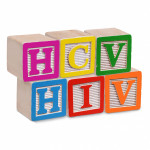HIV-positive men who have sex with men (MSM) in San Diego have seen an increasing rate of new cases of hepatitis C virus (HCV) over the past 15 years. This trend is likely driven by sexual transmission of HCV; meth and injection drug use are other risk factors.
Researchers conducted a retrospective cohort analysis of new cases of hep C among HIV-positive MSM who attended one of the two largest HIV clinics in San Diego between 2000 and 2015. The study authors analyzed data on 2,768 men, all of whom had a record of an initial HCV-negative test followed by one subsequent test for hep C antibodies or RNA (the virus’s genetic material); the men were considered to have recently contracted HCV if they had a positive result to either of those tests.
Results were presented at the Annual Meeting of the American Association for the Study of Liver Diseases in Washington, DC.
The researchers had a median of 4.3 years of follow-up data on the men, with a 25 to 75 percentile range of 1.9 to 8 years. During a cumulative 14,455 years of follow-up, 172 of the men tested positive for hep C, for a new infection rate of 1.19 percent per year (meaning that if 10,000 similar men lived for one year, 119 of them would contract hep C).
The rate of new HCV infections increased over time. Between 2000 and 2003, the new case rate was 0.36 percent per year; between 2004 and 2007, the rate was 1.1 percent per year; between 2008 and 2011, the rate was 1.14 percent per year; and between 2012 and 2015, the rate was 1.52 percent per year.
Among HIV-positive MSM who reported ever using meth, the new HCV rate was threefold higher, at 1.49 percent per year, compared with their counterparts who reported never using meth or injecting drugs, whose new HCV rate was 0.49 percent per year. Compared with those with no history of meth or injection drug use, the new HCV infection rate was 5.7-fold higher among those reporting just a history of injection drug use (2.59 percent per year) and 4.6-fold higher among those reporting a history of both meth and injection drug use (2.2 percent per year).







Comments
Comments